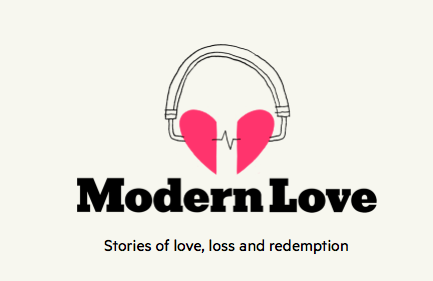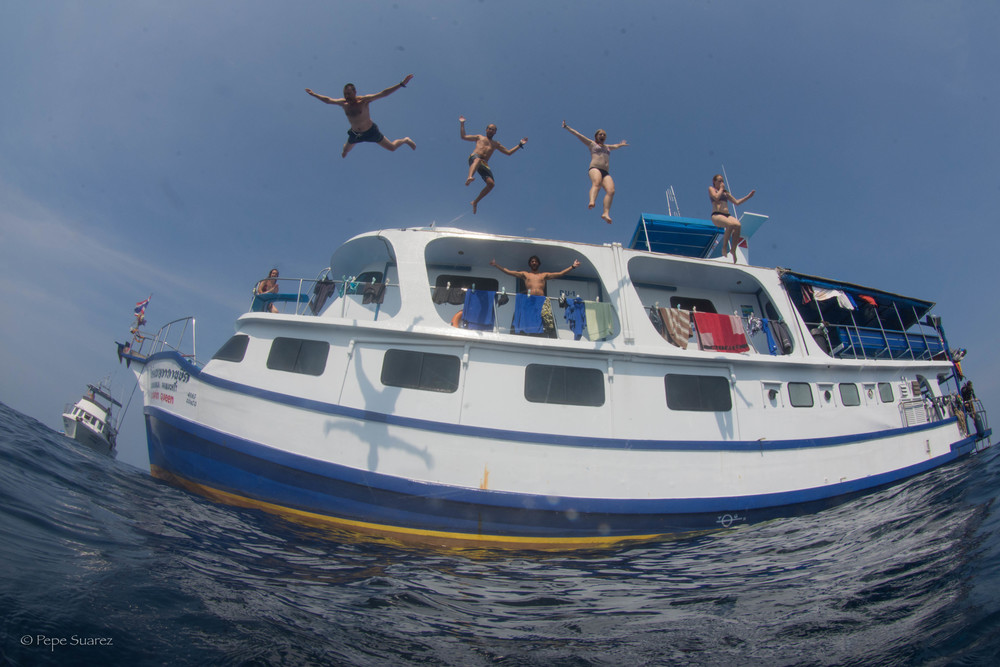The following is Grace's take on packing for a 12 month trip around the world. For Mike's perspective and to find out what he's been carrying, check out his post here.
When we first talked about creating a website to chronicle our travels, we knew that this post (the one you're reading) would be one of the most necessary and desired posts. So, why did it take 11 months to write?
Could I have posted a list of everything I was bringing before we left? Sure. And I almost did, but then those last few weeks were chaotic, full of planning, buying more gear, and saying goodbye until the last moments, so I never got around to it.
The silver lining is that now I can assure you I really know what it takes to live out of a backpack for a year. After all, I actually did it. So I think I can call myself an expert.
I had never truly backpacked before, so to figure out what to pack, I did a lot of research, reading blog posts just like this one. (Mike helped too, and deserves credit for all his trial testing. He had his pack, with nearly everything that's in it to this day, packed and ready to go a full six months before we left.)
I packed conservatively but lightly, and tried to follow my head as much as my gut. Now, 11 months in, I'm proud to be able to say that almost all my assumptions about clothes, gear, medicine, and so on were proven correct. The following breaks down what I used most, what has lasted the entire year and what was discarded somewhere along the way.
This is much more than a post about what I packed for a year-long trip. It's a guide for anyone needing to pack for a year in one small backpack and not lose his or her mind.
So, here it is, what’s in my pack:
A note about clothes: Because we were going to be traveling almost exclusively in warm climates, we didn't need to pack for four seasons. However, we did need some clothing for cooler destinations (like autumn in New Zealand) as well as hiking at high altitudes. The key to this? LAYERS. The Mountain Hardwear lightweight down jacket was key. Laying that on top of a long sleeve shirt and then putting a rain jacket shell on top was as insulated as wearing a ski jacket.
Clothes
- North Face rain jacket
- Mountain Hardwear down jacket
- Columbia fishing hat (yes, the one from all those safari photos)
- 2 pants (loose hiking pants and snug yoga pants)
- 3 shorts (swapped out one pair for another halfway through)
- 3 tank tops (a few lost, a few gained along the way)
- 2 dresses (picked one up in Thailand)
- 1 long sleeve shirt
- 3 short sleeve shirts
- 7 pairs of underwear
- 2 bathing suits
- 2 bras
- 4 pairs of socks
Shoes
- Nike sneakers
- Chaco sandals
- Sam Edelman flat sandals
- Pair of rubber flip flops (acquired in Koh Tao, Thailand)
Everything Else
- PASSPORT* (duh)
- Laptop*
- iPad*
- iPhone*
- Necessary charging cords and cables*
- Medicine bag (this included antimalarials, prescription antibiotics in case of bacterial infections, other prescription meds including Ambien, as well as ibuprofen, Imodium)*
- Back-up wallet with spare cards*
- Cheap digital watch*
- Mask and snorkel
- Eagle Creek bra wallet (with license and primary credit card)
- Makeup - one tube of mascara, one tube of concealer, an eyeliner (I haven’t run out because I only wear makeup about one day per week, on average)*
- First aid kit (we built it ourselves)
- Sea to Summit microfiber travel towel
- Silk sheet
- Laundry stuff (sink stopper, small bottles of high concentrate detergent)
- Toiletry bag - all shower/bathroom necessities, including a toothbrush
- In a small Tumi packing cell, I had a few miscellaneous items including batteries, safety pins, and a small sewing kit
* indicates that the item was kept in my second, smaller backpack, which was often my carry on when the bigger bag needed to be checked.
Lessons Learned
What I Ditched
Luckily, I fine-tuned the hell out of my stuff before we left the US, so I didn't have to get rid of a lot along the way. Here's what I realized I could live without:
- one pair of shorts that I wasn’t wearing as much
- one t-shirt that I wasn’t wearing and didn’t need
- a tank top that was stained and stretched out
- a cheap tank top purchased in Thailand ($2) that I wore for a few months
Acquired Along the Way:
- Sarong in Seychelles
- A maxi dress in Cape Town that I wore a lot but ditched in Melbourne
- A dress/cover up in Chiang Mai that I wear all the time
- Diving mask and snorkel in Koh Tao
- Bathing suit in Ao Nang when ours were at cleaners (sadly I lost it in Raglan, NZ)
- In Bali: sarong, another cheap coverup, and baseball hat in Uluwatu
- When mom was with us, she refreshed my wardrobe a bit: green shorts, two tank tops, a loose long sleeve pullover, new bathing suit to replace black one
- Trail running sneakers in NZ that I wore for a week before getting a stress fracture in my foot and then sent home with my mom when she visited us in Australia
This doesn't include the baseball hat that I bought and lost in Cape Town, or the sun hat I bought in Thailand and then there away in Singapore. What can I say? I have bad luck with hats.
Of all the items gained, the only things I still have are the cover ups, sarongs, hat, flip flops, clothes my mom bought (thank god for that wardrobe refresher), and my mask and snorkel (important for diving).
The Essentials
Packing cells are your new best friend. They make packing and organization much, much easier. Our favorite brand is Eagle Creek but there are a few companies out there to choose from.
Not surprisingly, the things we used most were the clothes, the electronics, and the medicine.
My biggest realization looking back is that I wasn’t prepared for the tropical, vacation-like destinations when you’re living in a bathing suit and need lightweight clothes. All my initial clothing choices were better suited for flying, trekking, tours, and keeping me covered so as to not offend anyone or attract unwanted attention. In the end, I added a few items that were more day-to-day and cheap enough that I could leave them behind if necessary.
And then there are the things you’ll inevitably gain along the way. Even though we've avoided buying and souvenirs or mementos, somehow we still ended up with some. Luckily, they're small knick knacks, like the the three bracelets and hand-sewn bags we were suckered into buying from our hiking guides in Sapa, Vietnam. You'll also have to restock sunscreen, toiletries, etc. as you go. Definitely don't try to bring a year's worth supply!
Finally, it's important to have room in your bag! Do not leave with your pack filled to the brim because that means you have too much stuff, you won't have room for the new stuff you will inevitably acquire and you’ll be forced to throw something away anyway.
What we didn't use as much as we thought we would:
The laundry kit we brought was used but after a while, we asked ourselves, does the few times we used it pay off for bringing it? it’s small and light, so it's not a huge deal. But, in most places, you can get your laundry done for next to nothing ($1-2) or find machines. Not to mention that there are almost always washers and dryers in Airbnbs. Only in the very remote areas is it necessary to be able to do it yourself.
Both of the things I brought "just in case I need to dress up" got very little use. I only wore the Sam Edelman sandals about three times and, as stated earlier, the makeup comes out once a week, maybe. Still, neither of them took up much room, so if I had to do it all over again, I'd probably still bring them.
The silk sheet is one thing I really never needed to use, although I did sleep in it at a few hostels and when we camped in the dead heat of Arizona in August.
All in all, there wasn't much we felt was a waste to bring along. Chock it up to the luxury of time for planning and research.
My pack at the end of the trip, compared to the beginning:
Interestingly, a lot of the items that were with me at the beginning have made it all the way around the world and back again, while the items gained have been quicker to vanish or be left behind.
I'm proud that my pack today looks pretty much the same as it did on the day that we left. Of course, it's a bit beaten up and much dirtier - riding around on dozens of baggage claim will do that to a bag. But it's still with me, which means it was never lost or stolen. It held up during rigorous travel circumstances, keeping all the loot inside safe and secure.
Overall, I'd recommend the Deuter Women's ACT Lite 45 + 10 Pack to anyone! It's a great bag that has served me well.
If you have any questions about how I packed or need some advice in planning your own adventure, please email me: theyearbetween@gmail.com.
BONUS: click here to see photos of items in my pack on our "What's in Grace's Pack" Pinterest board











